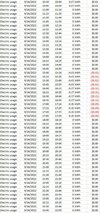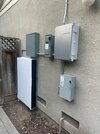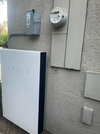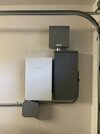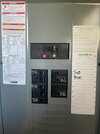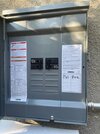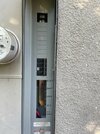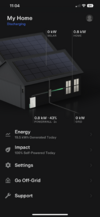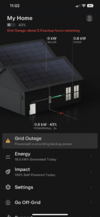Thanks all again for your feedback.
My system included a "whole home backup" where they installed what looks like a 2nd 200A panel? Regardless, I tested the "Disconnect from Grid" in the Tesla app just now and then went around the house checking each room to see if there was something not getting power (turned on/off lights, fans, TVs, checked kitchen appliances, fridge, etc.) and everything seemed to be working as no issue.
Is this the safest bet for me to operate until PTO?
During the day, solar would supply my house and excess goes to the batteries until full. I'm assuming when the batteries are full, the solar system will scale down to match house consumption and slowly start using the batteries as solar ends. Before I go to bed, I will plan to reconnect to the grid in case for some reason the batteries don't last us throughout the night and we have to consume from grid. Then in the morning when I wake-up, disconnect from the grid again through the app. Rinse and repeat until PTO.
This would allow me to consume the energy from the system/batteries, without the risk of pushing excess to the grid pre-PTO. Thoughts? Would the above put any kind of unnecessary strain on the hardware by doing this?
Yeah thats a good plan and would work. Whether the solar scales to the home load, or, basically shuts off (and the batteries cover the home load until they drain a bit and allow the solar to come back on) depends on how its setup, but what you are proposing would work fine if you were trying to obey the rules.
It shouldnt put any strain or anything on the hardware. the only issue I see that you could run into, is "what frequency is your electrical power when off grid, and how does the various items in your home tolerate it?"
By default, most Tesla installs have the off grid frequency at 65hz when its forcing the solar to turn off, and many electric items (microwaves, residential battery backups, some things with motors, etc" dont like 65hz power very much. Its getting into the weeds a bit here, but this is also something good to find out now, with a kill a watt (or similar) type plug in device which will show you what frequency your home is running at (power wise).
You can get tesla to adjust the frequency down if its too high, or may need to engage your solar installer since it wasnt tesla to find what its set to. You can also find out if it can curtail power (as you mentioned) or if its only "on / off".
Its probably good to do some off grid testing on your new install, so that you know how everything operates, whether you can start up your AC unit(s), etc.
You could also just say "screw it" and choose not to obey the rules, lots of people do that too (which is what your installer is telling you). Just depends on your risk tolerance. I am fairly risk averse for a few different reasons, but one of which is, "I" tend to be the "one who gets caught" doing stuff that "everyone else does, no problem, even though we are not supposed to".
So, I tend to be very careful, myself, about this type of thing. YMMV on it of course.



